Product Overview
Tadalafil / Oxytocin Orally Disintegrating Tablet (ODT) is a compounded sublingual formulation that combines a phosphodiesterase-5 (PDE-5) inhibitor with a nonapeptide neurohormone to address sexual arousal physiology through complementary pathways. Tadalafil’s extended plasma half-life of roughly seventeen and a half hours allows a single ODT to sustain cyclic guanosine monophosphate (cGMP) enhancement for an entire sexual cycle, while oxytocin, when delivered transmucosally, may influence central and peripheral oxytocin receptors associated with pro-social bonding, vasodilation, and smooth-muscle modulation[1].
The disintegrating matrix is engineered to dissolve within seconds, bypassing first-pass metabolism and enabling rapid systemic uptake, which in turn may produce a faster onset of action than conventional tablets. Unlike fixed commercial combinations, this preparation is patient-specific and produced under Section 503A, meaning each batch is compounded only pursuant to an individual prescription and in compliance with applicable United States Pharmacopeia chapters and state board oversight[2]. Early pharmacokinetic studies of tadalafil in healthy volunteers reveal dose-proportional exposure across a 2-50 mg range, minimal food effect, and negligible accumulation with once-daily use[3]. Oxytocin’s cardiometabolic profile, though historically linked to parturition, has been broadened to include natriuretic, anti-inflammatory, and endothelial effects, indicating that low, non-obstetric doses may support vascular function in selected adults[4].
The product is available in patient-specific strengths of 12 mg / 100 IU and 25 mg / 100 IU per ODT. For most adults, one tablet is allowed to disintegrate sublingually thirty to forty-five minutes before anticipated activity, not to exceed one dose in 24 hours unless otherwise directed by the prescriber. Orally disintegrating technology accelerates mucosal absorption; excipient design employs super-disintegrants and porous sugar-alcohol matrices that achieve mean disintegration times under 30 seconds, thus bypassing gastrointestinal dissolution limits[17]. Current literature on ODTs emphasizes patient-centric benefits-water-independent administration, improved adherence in dysphagic populations, and rapid pharmacodynamic onset-yet stresses the importance of stringent moisture-resistant packaging and uniformity testing to ensure dose accuracy[18]. Because compounded strengths may not mirror commercial labeling, clinicians should document exact milligram-to-IU ratios on each prescription.
At the molecular level, tadalafil selectively inhibits PDE-5, the enzyme responsible for cGMP hydrolysis in cavernosal smooth muscle, pulmonary vasculature, and other tissues. Inhibition elevates intracellular cGMP, which activates protein kinase G, leading to decreased calcium influx, myosin light-chain dephosphorylation, and ultimately smooth-muscle relaxation that enhances penile arterial inflow and corpus cavernosum engorgement[5]. Beyond erectile physiology, PDE-5 suppression has been studied for pleiotropic benefits such as anti-inflammatory signaling, platelet aggregation attenuation, and mitochondrial protection in cardiac tissue[6].
Oxytocin binds to G-protein-coupled oxytocin receptors distributed not only in the uterus but also in the heart, brain, and vasculature. Receptor activation triggers phospholipase C-β, inositol trisphosphate release, and calcium mobilization, producing transient vasodilatory and pro-social neurobehavioral responses. Emerging work suggests that intranasal or oral transmucosal oxytocin may engage limbic circuitry related to sexual motivation while simultaneously potentiating nitric-oxide synthase pathways that converge with cGMP signaling, offering a mechanistic rationale for the tadalafil-oxytocin pairing[7].
Concomitant administration of any organic nitrate or nitric-oxide donor with tadalafil is contraindicated because combined stimulation of the NO-cGMP axis can precipitate profound hypotension and reflex tachyarrhythmia. Clinical pharmacology studies demonstrate that even 24 hours after a 20 mg tadalafil dose, systolic blood pressure may drop more than 30 mm Hg in nitrate-exposed subjects, warranting an absolute avoidance window of at least 48 hours in practice[8].
Additional contraindications include hypersensitivity to tadalafil or oxytocin excipients, history of Stevens-Johnson syndrome attributable to PDE-5 inhibitors, and known oxytocin-induced anaphylaxis documented in obstetric settings[9]. Patients with severe aortic stenosis, uncontrolled arrhythmias, or recent myocardial infarction may be at heightened risk for adverse hemodynamic shifts; therefore, the formulation should not be initiated until cardiovascular stability is confirmed[10].
Oxytocin interacts with hundreds of medications, including vasopressors and certain antihypertensives, where additive pressor or hypotensive effects could complicate peri-coital dosing. Clinicians must review current drug profiles for major or moderate interactions, particularly in polypharmacy contexts[11]. Tadalafil is primarily metabolized by CYP3A4; potent inhibitors such as ketoconazole, ritonavir, and clarithromycin may raise tadalafil AUC several-fold, necessitating dosage reduction or extended interdose intervals. Conversely, strong CYP3A4 inducers (e.g., rifampin) could diminish therapeutic exposure. Co-administration with soluble guanylate-cyclase stimulators like riociguat is contraindicated because of synergistic hypotension, as highlighted in recent post-marketing safety communications[12].
Tadalafil’s most frequently reported adverse events include headache, flushing, dyspepsia, nasal congestion, and back pain, with priapism and non-arteritic anterior ischemic optic neuropathy noted as rare but serious outcomes[13]. Oxytocin, while generally well tolerated at sub-obstetric doses, carries potential for nausea, transient tachycardia, and in susceptible individuals, antidiuretic effects leading to hyponatremia. Meta-analysis of sixty-one randomized trials assessing oxytocin for postpartum hemorrhage prevention identified shivering and fever reduction yet recorded isolated cases of hypotension and arrhythmia, underscoring the need for vigilance even with low dosing[14]. When both agents are given together orally, cumulative vasodilatory activity could intensify dizziness or syncope, especially in dehydrated or elderly patients; dose titration should proceed cautiously.
Animal reproduction studies with tadalafil have shown no teratogenicity at exposure levels up to eight times the human dose, but embryo-fetal toxicity has been reported when tadalafil is combined with endothelin-receptor antagonists, prompting boxed warnings for certain fixed-dose combinations. Females of reproductive potential should employ effective contraception and ensure a confirmed negative pregnancy test before initiating therapy[15].
Conversely, oxytocin exerts uterotonic action and is used therapeutically to induce labor; inadvertent exposure during early gestation could theoretically stimulate uterine contractions and jeopardize implantation or provoke miscarriage. A 2024 meta-analysis linked intrapartum oxytocin augmentation to a statistically significant increase in postpartum hemorrhage, illustrating dose-dependent uterine fatigue and necessitating careful obstetric oversight if exposure occurs[16]. Therefore, this compounded ODT is contraindicated in pregnancy, and lactation safety has not been established.
Store the tablets in airtight blister strips at 20-25 °C (68-77 °F). The hygroscopic ODT matrix can absorb ambient humidity and lose structural integrity, so desiccant pouches and foil-laminate barriers are essential. After opening a strip, unused units should be consumed within thirty days to minimize moisture-triggered degradation of oxytocin peptide bonds and to preserve tadalafil potency, which may decline by up to three percent over sixty days if exposed to >60 % relative humidity[19].
- Forgue, S. T., Patterson, B. E., Bedding, A. W., et al. (2006). Tadalafil pharmacokinetics in healthy subjects. British Journal of Clinical Pharmacology, 61(3), 280-288. https://doi.org/10.1111/j.1365-2125.2005.02553.x
- Gutkowska, J., Jankowski, M., & Antunes-Rodrigues, J. (2014). The role of oxytocin in cardiovascular regulation. Brazilian Journal of Medical and Biological Research, 47(3), 206-214. https://doi.org/10.1590/1414-431X20133309
- Pyrgidis, N., Mykoniatis, I., Haidich, A.-B., et al. (2021). The effect of phosphodiesterase-type 5 inhibitors on erectile function: An overview of systematic reviews. Frontiers in Pharmacology, 12, 735708. https://doi.org/10.3389/fphar.2021.735708
- Nemr, M. T. M., Abdelaziz, M. A., Teleb, M., et al. (2024). An overview on pharmaceutical applications of phosphodiesterase 5 inhibitors. Molecular Diversity. https://doi.org/10.1007/s11030-024-11016-2
- Kloner, R. A., Hutter, A. M., Emmick, J. T., et al. (2003). Time course of the interaction between tadalafil and nitrates. Journal of the American College of Cardiology, 42(10), 1855-1860. https://doi.org/10.1016/j.jacc.2003.09.023
- Eli Lilly and Company. (2011). CIALIS (tadalafil) tablets [Prescribing information]. U.S. Food and Drug Administration. https://www.accessdata.fda.gov/drugsatfda_docs/label/2011/021368s20s21lbl.pdf
- Drugs..com. (2025). Oxytocin drug interactions. Retrieved June 23, 2025, from https://www.drugs.com/drug-interactions/oxytocin.html
- Utica Pharmaceuticals. (2024). CHEWTADZY (tadalafil) chewable tablets [Prescribing information]. U.S. Food and Drug Administration. https://www.accessdata.fda.gov/drugsatfda_docs/label/2024/218527s000lbl.pdf
- Brinstead, E. (2018). Tadalafil (oral tablet): Side effects and more. Healthline. https://www.healthline.com/health/drugs/tadalafil-oral-tablet
- Zeng, Y., Zhang, Y., Zhen, M., et al. (2022). Side-effects of oxytocin in postpartum hemorrhage: A systematic review and meta-analysis. American Journal of Translational Research, 14(3), 1934-1951. http://www.ajtr.org/files/ajtr0139967.pdf
- Janssen Pharmaceuticals. (2024). OPSYNVI (macitentan and tadalafil) tablets [Prescribing information]. U.S. Food and Drug Administration. https://www.accessdata.fda.gov/drugsatfda_docs/label/2024/218490s000lbl.pdf
- Jafarabady, K., Eshraghi, N., Zare, F., et al. (2024). Association of oxytocin augmentation with postpartum hemorrhage: A systematic review and meta-analysis. Journal of Maternal-Fetal & Neonatal Medicine, 37, 2369210. https://doi.org/10.1080/14767058.2024.2369210
- Poursharifi Ghourichay, M., Kiaie, S. H., Nokhodchi, A., & Javadzadeh, Y. (2021). Formulation and quality control of orally disintegrating tablets: Recent advances and perspectives. BioMed Research International, 2021, 6618934. https://doi.org/10.1155/2021/6618934
- Chinwala, M. (2020). Recent formulation advances and therapeutic usefulness of orally disintegrating tablets. Pharmacy, 8(4), 186. https://doi.org/10.3390/pharmacy8040186
- Khailkhura, S., Singh, B., Joshi, D., & Semwal, N. (2022). Orally disintegrating tablet: A review. World Journal of Biology Pharmacy and Health Sciences, 11(3), 18-25. https://doi.org/10.30574/wjbphs.2022.11.3.0124
- U.S. Food and Drug Administration. (2023). Section 503A of the Federal Food, Drug, and Cosmetic Act. https://www.fda.gov/drugs/human-drug-compounding/section-503a-federal-food-drug-and-cosmetic-act
- The FDA Group. (2021). 503A vs. 503B: A quick-guide to compounding pharmacy designations & regulations. https://www.thefdagroup.com/blog/503a-vs-503b-compounding-pharmacies
- Gordon, S. (2024). Combining medications for erectile dysfunction and chest pain may increase risk of death. Health. https://www.health.com/erectile-dysfuntion-chest-pain-medications-dangerous-8430785
- Par Pharmaceutical. (2022). TADLIQ (tadalafil) oral suspension [Prescribing information]. U.S. Food and Drug Administration. https://www.accessdata.fda.gov/drugsatfda_docs/label/2022/214522s000lbl.pdf
- Forgue, S. T., Phillips, D. L., Bedding, A. W., et al. (2007). Effects of gender, age, diabetes mellitus and renal and hepatic impairment on tadalafil pharmacokinetics. British Journal of Clinical Pharmacology, 63(1), 24-35. https://doi.org/10.1111/j.1365-2125.2006.02726.x
- Avadel Pharmaceuticals. (2021). ENTADFI (finasteride and tadalafil) capsules [Prescribing information]. U.S. Food and Drug Administration. https://www.accessdata.fda.gov/drugsatfda_docs/label/2021/215423s000lbl.pdf
- Ai, W., Zeng, Y., Zhen, M., et al. (2023). Side-effects of intravenously versus intramuscularly oxytocin for postpartum hemorrhage: A systematic review and meta-analysis. Frontiers in Pharmacology, 14, 1273771. https://doi.org/10.3389/fphar.2023.1273771
- National Academies of Sciences, Engineering, and Medicine. (2020). Regulatory framework for compounded preparations. National Center for Biotechnology Information. https://www.ncbi.nlm.nih.gov/books/NBK562888/
- Wishart, D. S., Feunang, Y. D., Guo, A. C., et al. (2018). DrugBank 5.0: A major update to the DrugBank database for 2018. Nucleic Acids Research, 46(D1), D1074-D1082. https://go.drugbank.com/drugs/DB00107
- Eli Lilly and Company. (2018). CIALIS (tadalafil) tablets revised label 4221373. U.S. Food and Drug Administration. https://www.accessdata.fda.gov/drugsatfda_docs/label/2018/021368s030lbl.pdf
What advantages does an ODT provide over a conventional film-coated tablet?
Rapid sublingual dissolution bypasses first-pass metabolism and facilitates use without water, improving adherence for patients who struggle with swallowing[20]
Is this formulation manufactured in a 503B outsourcing facility?
No, it is prepared only under the 503A patient-specific exemption, meaning each batch is tied to an individual prescription and is not produced for office stock[21]
Can I take nitrates for chest pain after using the ODT?
No; combining PDE-5 inhibitors with nitrates has been associated with a 35-40 % increase in mortality in observational cohorts, so a washout of at least 48 hours is mandatory[22]
Do chewable PDE-5 products share the same contraindications?
Yes; labels for alternative tadalafil chewable formulations also warn against any nitrate co-administration because hypotension can occur regardless of dosage form[23]
How do age and renal impairment affect dosing?
Pharmacokinetic analyses show that severe renal or hepatic dysfunction can double tadalafil exposure; dose reduction or extended dosing intervals are advised[24]
Are other combination products such as finasteride-tadalafil relevant?
ENTADFI includes tadalafil and shares contraindications with nitrates and guanylate-cyclase stimulators, reinforcing the need for a thorough medication review[25]
Does intravenous oxytocin carry different risks than oral oxytocin?
Systematic reviews indicate higher rates of hypotension and water intoxication with parenteral bolus dosing compared with low dose transmucosal use[26]
Could over-the-counter supplements containing oxytocin interact?
Yes; synthetic oxytocin analogues marketed as sprays may potentiate receptor activation and increase adverse event risk when coupled with this ODT, so concurrent use is discouraged[28]
Why must I avoid alcohol before dosing?
Ethanol can amplify vasodilatory effects, further lowering blood pressure, and prescribing information for tadalafil advises limiting alcohol to reduce dizziness and syncope[29]
Disclaimer: This compounded medication is prepared under section 503A of the U.S. Federal Food, Drug, and Cosmetic Act. Safety and efficacy for this formulation have not been evaluated by the FDA. Therapy should be initiated and monitored only by qualified healthcare professionals.
Administration Instructions
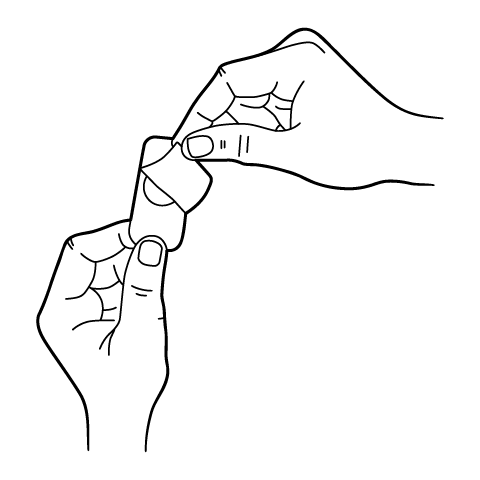
ODT and Troches Instructions
503A vs 503B
- 503A pharmacies compound products for specific patients whose prescriptions are sent by their healthcare provider.
- 503B outsourcing facilities compound products on a larger scale (bulk amounts) for healthcare providers to have on hand and administer to patients in their offices.
Frequently asked questions
Our team of experts has the answers you're looking for.
A clinical pharmacist cannot recommend a specific doctor. Because we are licensed in all 50 states*, we can accept prescriptions from many licensed prescribers if the prescription is written within their scope of practice and with a valid patient-practitioner relationship.
*Licensing is subject to change.
Each injectable IV product will have the osmolarity listed on the label located on the vial.

Given the vastness and uniqueness of individualized compounded formulations, it is impossible to list every potential compound we offer. To inquire if we currently carry or can compound your prescription, please fill out the form located on our Contact page or call us at (877) 562-8577.
We source all our medications and active pharmaceutical ingredients from FDA-registered suppliers and manufacturers.


 Sildenafil / Tadalafil ODT
Sildenafil / Tadalafil ODT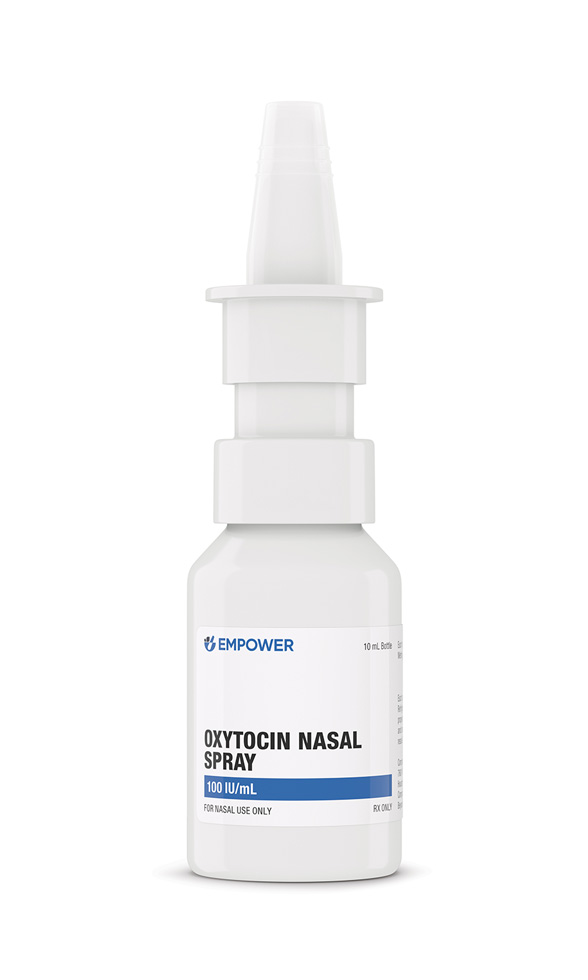 Oxytocin Nasal Spray
Oxytocin Nasal Spray Sildenafil ODT
Sildenafil ODT Oxytocin ODT
Oxytocin ODT Tadalafil ODT
Tadalafil ODT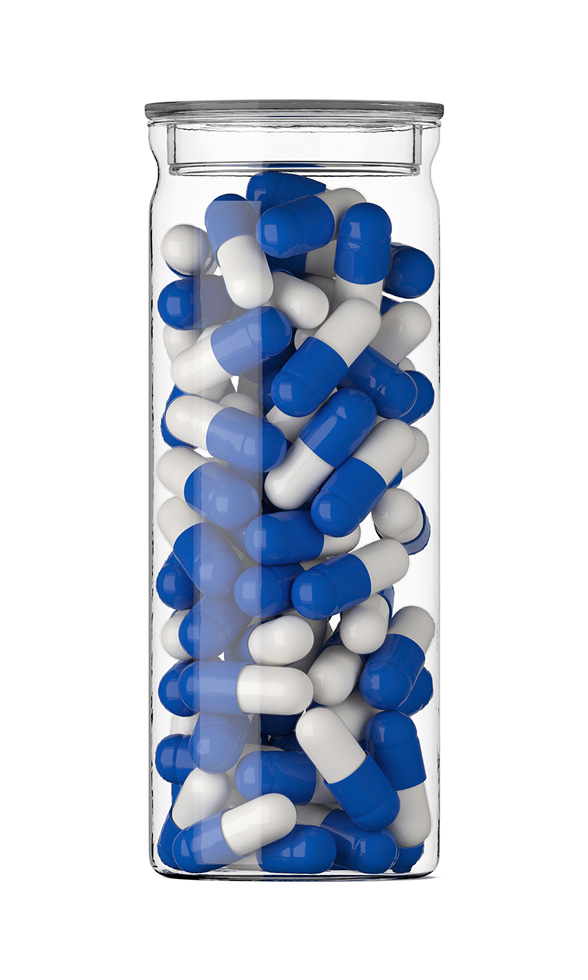 Enclomiphene Citrate Capsules
Enclomiphene Citrate Capsules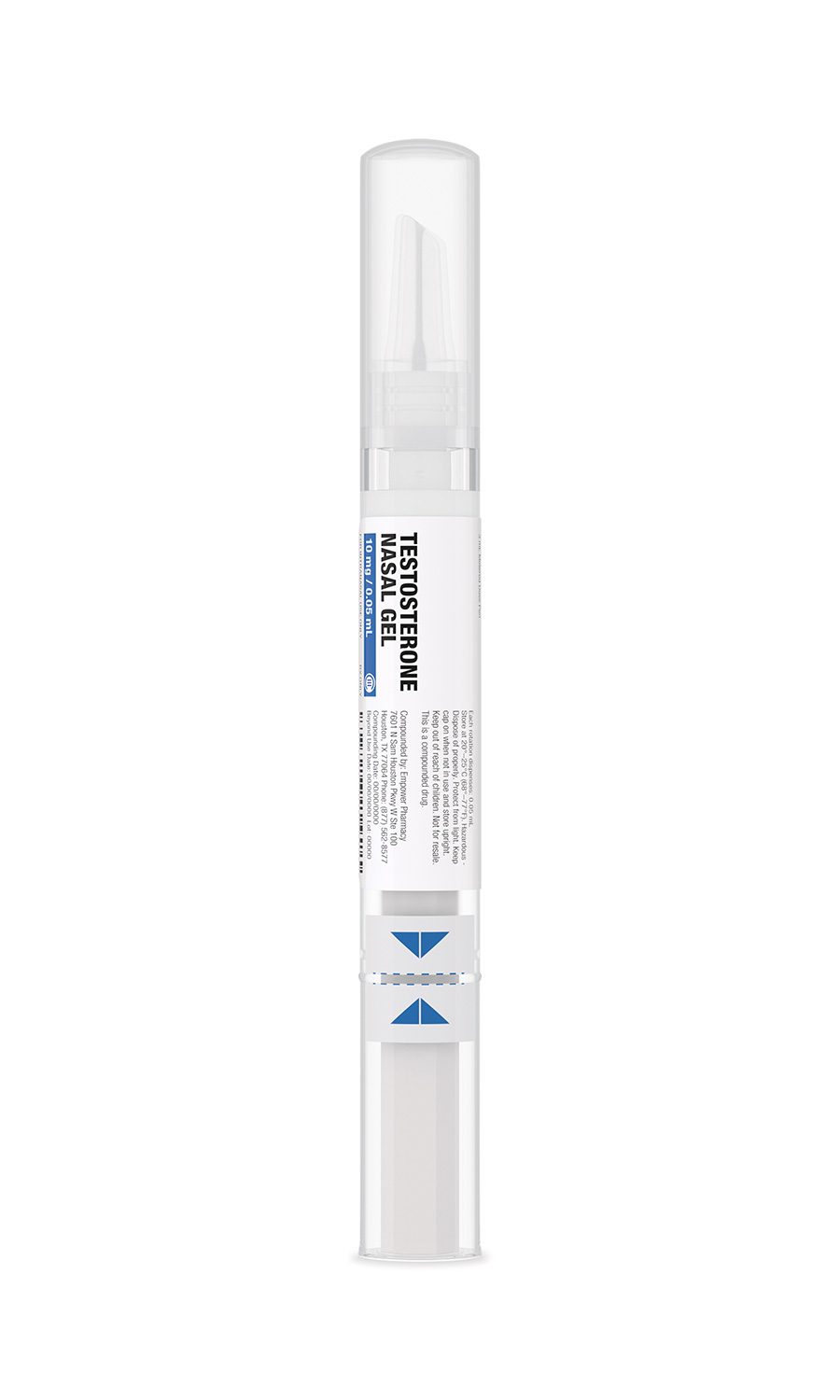 Testosterone Nasal Gel
Testosterone Nasal Gel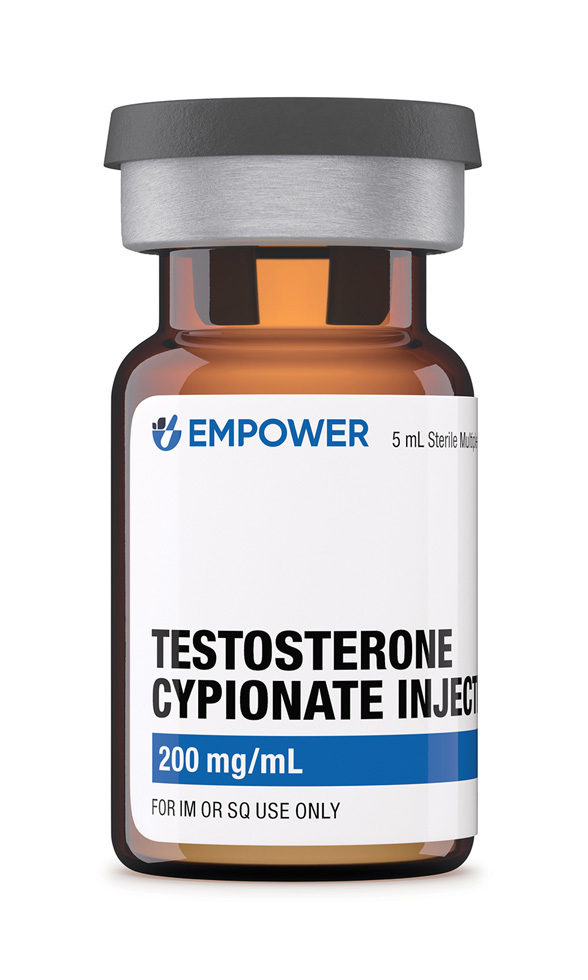 Testosterone Cypionate Injection
Testosterone Cypionate Injection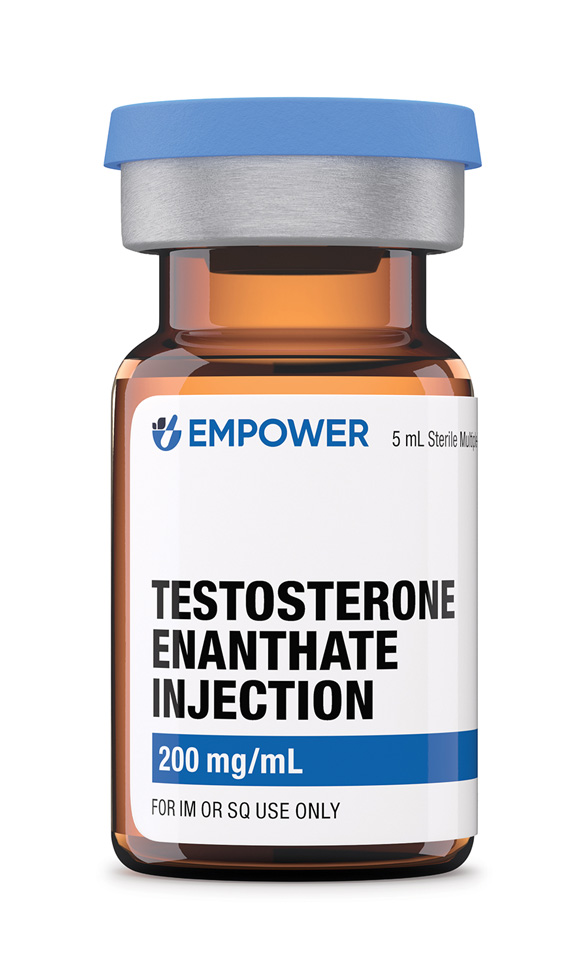 Testosterone Enanthate Injection
Testosterone Enanthate Injection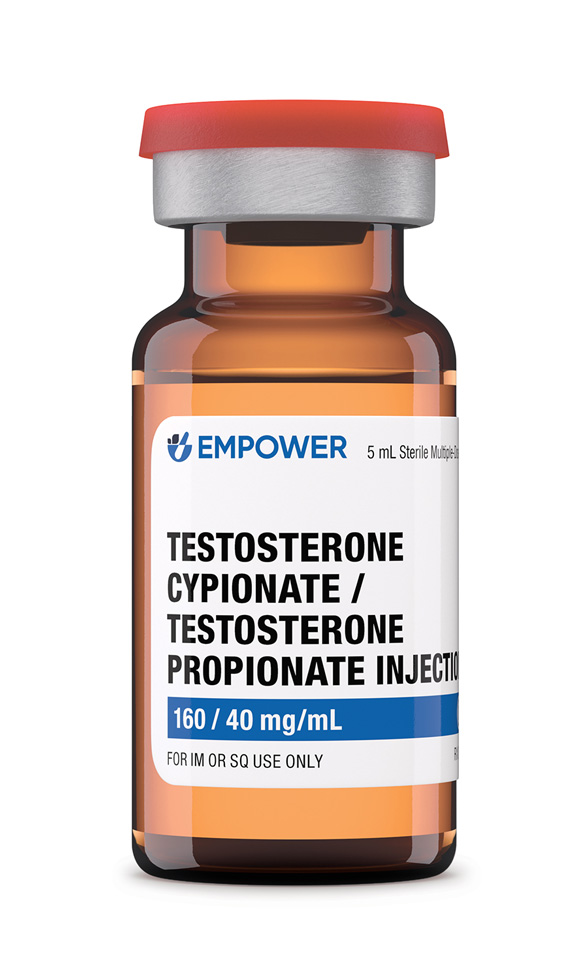 Testosterone Cypionate / Testosterone Propionate Injection
Testosterone Cypionate / Testosterone Propionate Injection